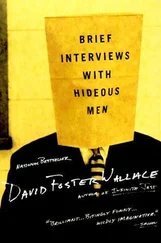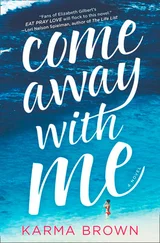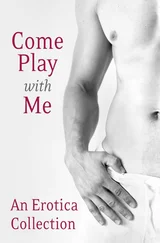Scott MacDonald - A Critical Cinema 2 - Interviews with Independent Filmmakers
Здесь есть возможность читать онлайн «Scott MacDonald - A Critical Cinema 2 - Interviews with Independent Filmmakers» весь текст электронной книги совершенно бесплатно (целиком полную версию без сокращений). В некоторых случаях можно слушать аудио, скачать через торрент в формате fb2 и присутствует краткое содержание. Год выпуска: 1992, ISBN: 1992, Издательство: University of California Press, Жанр: Прочая документальная литература, на английском языке. Описание произведения, (предисловие) а так же отзывы посетителей доступны на портале библиотеки ЛибКат.
- Название:A Critical Cinema 2: Interviews with Independent Filmmakers
- Автор:
- Издательство:University of California Press
- Жанр:
- Год:1992
- ISBN:9780585335100
- Рейтинг книги:3 / 5. Голосов: 1
-
Избранное:Добавить в избранное
- Отзывы:
-
Ваша оценка:
- 60
- 1
- 2
- 3
- 4
- 5
A Critical Cinema 2: Interviews with Independent Filmmakers: краткое содержание, описание и аннотация
Предлагаем к чтению аннотацию, описание, краткое содержание или предисловие (зависит от того, что написал сам автор книги «A Critical Cinema 2: Interviews with Independent Filmmakers»). Если вы не нашли необходимую информацию о книге — напишите в комментариях, мы постараемся отыскать её.
A Critical Cinema 2: Interviews with Independent Filmmakers — читать онлайн бесплатно полную книгу (весь текст) целиком
Ниже представлен текст книги, разбитый по страницам. Система сохранения места последней прочитанной страницы, позволяет с удобством читать онлайн бесплатно книгу «A Critical Cinema 2: Interviews with Independent Filmmakers», без необходимости каждый раз заново искать на чём Вы остановились. Поставьте закладку, и сможете в любой момент перейти на страницу, на которой закончили чтение.
Интервал:
Закладка:
Other filmmakers invoke fewer cinematic conventions. Some replace the interest in fictional characters and scripted plots with personal explorations of their own lives, particularly dimensions of their lives usually considered unfilmictoo mundane or too outrageous for a conventional film. Carolee Schneemann's frank, erotic revelations of her sexual interactions with lover James Tenney (in
Fuses,
1967) exposedand continue to exposenot only her own personal life, but the limitations of the conventional cinema's portrayal of heterosexual eroticism. Still other filmmakers bring forward dimensions of the conventional cinema that are so fundamental that most moviegoers have rarely, if ever, been conscious of them as conventions. In his films of the early seventies, Taka Iimura eliminates all photographic. imagery and explores the impact of durations of time in the movie theater, using a variety of systems of measurement. Iimura's films simultaneously create new, "minimal" forms of film experience, and they focus on the issue of duration in a way that enables us to think more extensively about the nature and implications of the conventional cinema's manipulations of time.
The critical dimension of the films discussed in
A Critical Cinema
is certainly not the only interesting aspect of those films. The long history of independent cinema has produced hundreds of films that can sustain a viewer's fascination regardless of whatever relationships exist between these films and the commercial cinema. While some independent filmmakers admit their interest in critiquing what they've experienced in commercial movie theaters and on television, others see their work as developing out of traditions that have little or nothing to do with the movie industry and its products. In fact, some of the filmmakers I include under the rubric of "critical" have never been regular moviegoers.
Page 3
My investment in the idea of critical cinema comes from being a teacher. Indeed, "critical cinema" is not meant as a descriptive term that distinguishes some intrinsic dimension of the particular films it is used in connection with; it's a pragmatic term meant to suggest a way of using a broad spectrum of independent films that, in general, remain one of film history's most underutilized educational resources. I cannot imagine teaching effectively without exposing students to an intertextual discourse of the broadest possible variety of film experiences, including those "avant-garde" or ''experimental" films that provide the most extensive and deepest shocks to viewers whose definition of cinema is primarily a product of commercial entertainments in the theater and on television. Of course, another practical value of including a range of independent film in film courses at all levels of formal film study (and in the many other sectors of academe that can profit from them) is the maintenance of forms of film production that remain financially marginal: the more often independent films are rentedfor whatever reasonthe more vital independent film production is likely to be.
My decision to become involved in an ongoing interview project developed from my recognition that those who are interested in using independent film as a critique of mainstream cinema and television are likely to appreciate the historical and ideological context extensive interviews with filmmakers can provide. Because "critical films" are unconventional, they almost inevitably create problems for audiences, even audiences that consider themselves open to new film experiences. And while comments by filmmakers about the particular films they make can never be the final wordas Hollis Frampton says in Volume 1, "It's obvious that there are things that spectators can know about a work, any work, that the person who made it can ever know" (p. 57)their attitudes about what they've made and their revelations of the personal, social, and theoretical contexts out of which particular works developed can be of considerable interest and use to the viewer trying to come to terms with difficult films. Further, discussions with filmmakers usually reveal the degree to which the critical edge of particular films is the result of conscious decisions by filmmakers interested in cinematically confronting the conventional and to what degree it is a projection by programmers or teachers interested in mining the intertextual potential of the films. And finally, in-depth interviews with filmmakers over several years help to develop a sense of the ongoing history of independent filmmaking and the people and institutions that sustain it.
Volume 2 of
A Critical Cinema
extends the general approach initiated in Volume 1. All the filmmakers interviewed for this volume could be categorized in terms of how fully or how minimally they invoke the conventional cinema and the system of expectations it has created, or to be
Page 4
more precisesince nearly all the filmmakers I interview make various types of filmseach film discussed in this volume could be ranged along an axis that extends from films that invoke many conventionsfilms like James Benning's
11 × 14
(1976), Laura Mulvey and Peter Wollen's
Riddles of the Sphinx
(1977), Lizzie Borden's
Working Girls
(1986), and Su Friedrich's
Damned If You Don't
(1987)only to undercut the expectations they've created, to films that seem to have almost no connection with the conventional cinema, but nevertheless explore a dimension of the film experience that underlies both conventional and alternative film practice: Anthony McCall's
Line Describing a Cone
(1973), which focuses on the cone of light between projector and wall, is a good example.
My method as an interviewer has also remained the same. I have sought out filmmakers whose work challenges the conventional cinema, whose films pose problems for viewers. Whenever it has seemed both necessary and possible, I have explored all the films of a filmmaker in detail and have discussed them, one by one, in as much depth as has seemed useful. In a few recent instances, however, my interest in interviewing a filmmaker has been spurted by the accomplishments of a single film. I interviewed Anne Severson (now Alice Anne Parker) about
Near the Big Chakra
(1972) and Laura Mulvey about
Riddles of the Sphinx
because of the excitement of using these films in classes and the many questions raised about them in class discussions. In most cases, I have traveled to filmmakers' homes or mutually agreed-upon locations and have taped our discussions, subsequently transcribing and editing the discussions and returning them to the filmmakers for corrections. My editing of the transcribed tapes is usually quite extensive: the goal is always to remain as true to the fundamental ideas and attitudes of filmmakers as possible, not simply to present their spoken statements verbatim, though I do attempt to provide a flavor of each filmmaker's way of speaking. The interviews in
A Critical Cinema
are in no instance conceived as exposés; they are attempts to facilitate a communication to actual and potential viewers of what the filmmakers would like viewers to understand about their work, in words they are comfortable with.
While my general approach as an interviewer has remained the same, the implicit structure of Volume 2 differs from that of Volume 1, in which the interviews are arranged roughly in the order I conducted and completed them. In Volume 2 the arrangement of the interviews has nothing to do with the order in which they were conducted. Rather, the volume is organized so as to suggest general historical dimensions of the film careers explored in the interviews and to highlight the potential of the work of individual independent filmmakers not only to critique the conventional cinema but to function within an ongoing discourse with the work of other critical filmmakers.
Читать дальшеИнтервал:
Закладка:
Похожие книги на «A Critical Cinema 2: Interviews with Independent Filmmakers»
Представляем Вашему вниманию похожие книги на «A Critical Cinema 2: Interviews with Independent Filmmakers» списком для выбора. Мы отобрали схожую по названию и смыслу литературу в надежде предоставить читателям больше вариантов отыскать новые, интересные, ещё непрочитанные произведения.
Обсуждение, отзывы о книге «A Critical Cinema 2: Interviews with Independent Filmmakers» и просто собственные мнения читателей. Оставьте ваши комментарии, напишите, что Вы думаете о произведении, его смысле или главных героях. Укажите что конкретно понравилось, а что нет, и почему Вы так считаете.











